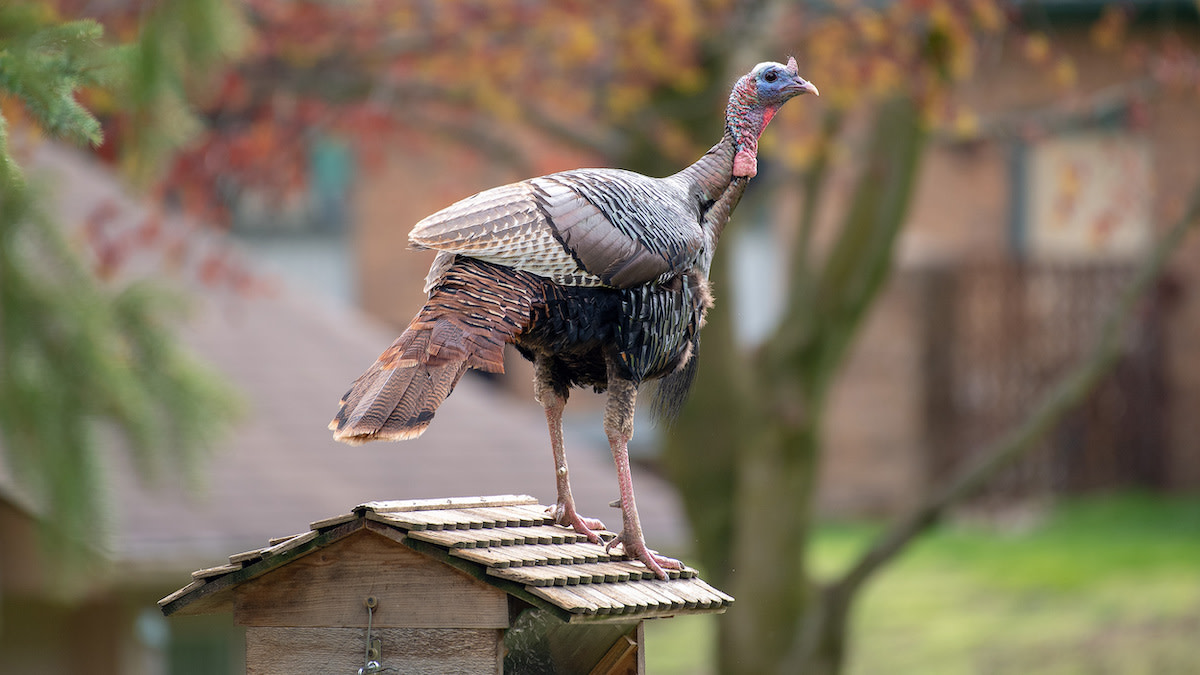
It is no secret that urbanization is progressing rapidly across the nation—often at the expense of wildlife habitat. While development can be bad news for many species that depend on undisrupted habitat, some animals flourish in urban settings, especially wild turkeys. Calling on the edge of town might not be everyone’s preference, but the opportunistic hunter can take advantage of robust and often unpressured urban turkey populations.
The Merriam’s turkeys that reside near my home in the Black Hills of South Dakota have about 1.2 million acres of forest at their disposal, yet many of them prefer the habitat in and around civilization. I reached out to Taylor Chamberlin, host of the Hunt Urban YouTube channel and Hang and Hunt Podcast to compare notes on the subject. Chamberlin resides in the suburbs of Washington, D.C., and excels at hunting deer and turkeys in the heart of suburbia. Here are some tried-and-true tips and tactics we’ve both found for chasing urban gobblers.
Locating Urban Sanctuaries
Chamberlin starts his search by identifying “green pockets” or undeveloped funnels that connect large chunks of timber. “These little pockets are often floodplains and other areas simply too wet to develop, creating great wildlife habitat,” he said. “Sanctuaries come in all shapes and sizes, and no property is too small to hold birds.”
Turkeys are opportunistic and will inhabit any place that presents a small refuge and ample forage. Chamberlin has found success hunting sanctuaries as small as a 50 yards wide.
“A little 3-acre creek bottom can be an incredible sanctuary for urban birds,” Chamberlin said. “They get pushed into these little pockets because nobody messes with them in these areas.”
After identifying several spots that are likely to hold birds, Chamberlin then connects the dots and builds a roadmap to survey from behind the wheel. He believes the key to springtime success is road scouting and developing a large inventory of bird gathering places. The more birds you have located and the more properties you have access to, the more successful you will be.
Urban Tactics
When hunting urban birds in the backyard of the nation’s capital, Chamberlin’s strategy is aggressive and mobile. This is possible when you’ve done your homework and secured numerous properties to hunt. When Chamberlin sees an opportunity, he goes for broke knowing that he has plenty of backup areas in the hopper.
On the flipside, if your hunting access is limited or you prefer a more relaxed hunting experience, patience can be your friend. If scouting reveals the turkey’s core area, placing yourself within it will eventually pay off. Turkeys aren’t likely to abandon their home ground, so a few decoys and even novice calling skills can be all it takes to put a tom in your lap.
For obvious reasons, most urban hunts are done with archery equipment. “Make sure your equipment is super dialed. You need to be hyper accurate when hunting in an urban setting,” Chamberlin said.
Other gear that will aid in your success is a ground blind, realistic decoys, and broadheads with a wide cutting diameter. With small kill zones and always-moving targets, a large cutting broadhead can slightly decrease your margin of error.
Urban Nuances
“It is very important to familiarize yourself with local hunting restrictions,” Chamberlin said. “Each local municipality likely has differing hunting restrictions.”
He highly recommends reading the rules and regulations first, then calling the local game warden for additional clarification. Of note, different government agencies vary widely on what constitutes a weapon. It isn’t uncommon for bows to be lumped into the firearm category and to carry the same restrictions as shotguns.
There’s an art to getting permission to hunt a property, and getting hunting permission in metro areas has its own nuances. “Dress in regular clothes (no camouflage) when asking for permission or when contact with the general public is likely,” Chamberlin said. “You’d be surprised how easy it is to get permission. Be courteous, knowledgeable, and have confidence.”
Sometimes suburbia becomes wildlife’s preferred environment. For turkeys, human development offers protection from predators while presenting the best food sources available. Bird feeders and green lawns can be tempting for the local flock, but don’t let this deter you from a quality hunting experience. Know your local regulations and capitalize on the drawing power of urban landscapes.








Conversation